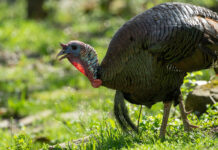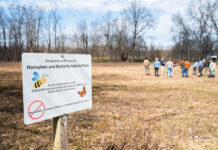CAMP HILL, Pa. — The Pennsylvania Farm Bureau has joined the American Farm Bureau Federation and a coalition of groups in asking the U.S. Supreme Court to hear an appeal of a federal court decision that upholds the Environmental Protection Agency’s implementation of a Total Maximum Daily Load (TMDL) in the Chesapeake Bay Watershed.
“We disagree with a lower court’s decision that provides EPA the authority to supersede land use decisions typically made by states located in the watershed,” said PFB President Rick Ebert. “EPA’s plan does much more than set a cap level of daily loads through its one-size-fits-all approach; it displaces powers reserved to states by setting specific timelines and actions to attain the plan’s goals.”
Opponents say federal officials have also indicated that the agency’s effort in the Chesapeake Bay to impose land use control through a TMDL will also be attempted in other major watersheds across the nation.
Farmland affected
Ebert said the EPA has projected that roughly 20 percent of all cropland in the Chesapeake Bay Watershed will have to be removed from food production and be converted to grassland or forest in order to achieve its water quality goals.
“Placing more than 600,000 acres of the watershed’s fertile farmland into retirement will significantly weaken local communities and local food systems,” added Ebert.
PFB has worked with state and federal officials to find a feasible way for Pennsylvania to meet its water quality goals, and continues to work with officials to find a way for farmers to receive full credit for conservation practices that are effectively preventing runoff, but not recognized by EPA.
Ignores farm actions
“EPA’s Chesapeake Bay Watershed Model has been flawed since day one. It fails to account for a vast amount of voluntary best management practices (BMPs) installed by farmers to improve the environment and water quality. By failing to account for those on-farm BMPs, EPA incorrectly concludes that Pennsylvania farms are responsible for more nutrient runoff than what actually enters a water source,” Ebert said.












